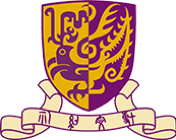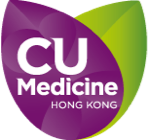Background
Colorectal cancer (CRC) ranked second and third in women and men respectively in the prevalence rates of all cancers in the world. Despite advances in conventional oncological care, CRC’s mortality remains high and patients often suffered from disturbance in gastrointestinal, urinary, and sexual function, pain and fatigue while terminal stage CRC patients suffered significantly in quality of life deterioration. Chinese CHM (CHM) in traditional Chinese medicine (TCM) was commonly used by cancer patients and it was found to be associated with both disease-free survival and overall survival as well as mitigating side effects. However, concurrent use of CHM is generally discouraged by Western medicine trained doctors (WMDs) because of the lack of understanding of TCM and concern for herb-drug interactions. For the sake of patients, a communication between TCM and WM must be initiated, and their respective philosophies of care needs to be identified to facilitate exchange of information in order to provide an all-rounded integrative care for CRC patients.
Methods
The aims of the study were to identify the pull and push factors of WM and TCM among CRC patients in Hong Kong and to identify the philosophies of CRC care among TCM and WM physicians. This was an exploratory qualitative study using the framework analysis method. 20 CRC patients, 10 Chinese medicine practitioners (CMPs) and 5 oncologists were identified through a purposive and then convenience sampling strategy. Data were collected and generated from face-to-face digitally audio-recorded semi-structured interviews. All interviews were transcribed verbatim in Cantonese. NVivo 11 plus was used to store and manage data.
Results
The mean age of patient participants was 62.1 and half of them were female. 80% of participants (n=16) had consulted CMP and took CHM for their cancer treatment or recovery and among which, 5 (25%) took CHM throughout their chemotherapy. The main pull factors for WM were 1) faith in biomedicine, 2) evidence-based, 3) disease management, and 4) efficacy and the WM push factors were: 1) side effects, 2) psychological impact, 3) management inadequacy, and 4) medical inadequacy. On the other hand, four TCM pull factors pertained to: 1) effectiveness and holistic approach of TCM, 2) sustaining supporting treatment when western medical treatments were completed, 3) last resort for late stage patients, and 4) mental support. The push factors favoring TCM’s pertained to: 1) concerns for herb-drug interactions and side effect, and 2) general drawbacks. WM’s philosophy of care were characterized by standardization and guidelines while TCM’s were characterized by versatility and integrative medicine.
Conclusion
Although TCM and WM complement with each other, cautions have to be taken. To protect patients, it is important to have a specifically designed education system or quality assessment for CMP targeting CRC – TCM cancer treatment to ensure the CMPs are qualified in terms of understanding western medicine terminologies, purposes of treatment and possible side effects. Although it is difficult to standardize TCM prescription because of the complexity of syndrome differentiation, a treatment guideline with consensus could be drafted from the key stakeholders for reference. From the patients’ point of view, this is a first study in Hong Kong identifying the communication gap between TCM and WM. We had identified the characteristics of the respective philosophies of care to facilitate exchange of information to build an all-rounded integrative care for CRC patients.





